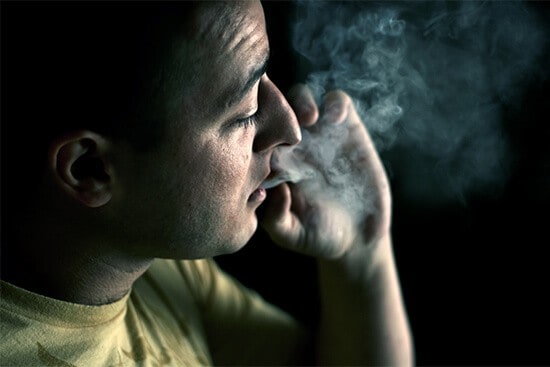Marijuana users may believe that frequent use helps them sleep, but that perception has been challenged by a BU School of Public Health study.
The study, published in the Journal of Addictive Diseases, was coauthored by Michael Stein, an SPH professor and chair of health law, policy, and management. It found that daily marijuana users actually scored higher on the Insomnia Severity Index and on sleep-disturbance measures than those who did not use it daily. The study’s 98 subjects were broken into three groups: daily users of marijuana (49 people); those who were not daily users (29), defined as those who smoked at least one day in the past month and up to five days a week; and a control group who didn’t use the drug at all (20). Most of the study participants were in their early 20s.
“Better sleep is one of the positive effects that marijuana users swear by, but there has been relatively little careful research on this topic,” says Stein, the study’s principal investigator.
In the study, he and colleagues cite previous research indicating that as many as one-third of young adults, ages 18 to 25, complain of sleep problems. The study findings show that while occasional marijuana use doesn’t disrupt sleep, heavy (or daily) marijuana use is associated with sleep difficulties.
“The effects of marijuana on sleep in intermittent users may be similar, in part, to those of alcohol, where improvements in sleep continuity measures have been reported with intermittent use,” the researchers wrote. But “daily use results in the worsening of sleep.”
The study examined sleep patterns in the three groups of young adults. The researchers found no significant differences in the sleep characteristics of those who did not use marijuana daily compared to those who did not use it at all. Daytime sleepiness also did not differ among heavy users, lighter users, and nonusers.
“Sleep disturbance, which is common in this age group, may not be increased by non-daily use,” the authors wrote.
While 20 percent of the nonsmokers met the criteria for clinical insomnia, for the daily users meeting those criteria, it was 39 percent. Similarly, sleep disruption measures were worse for daily users than for occasional users.
The researchers noted that daily marijuana users typically reported smoking marijuana in the daytime and at night, and less frequent users smoked primarily at night.
“Study participants who didn’t smoke every day usually smoked in the evening,” Stein says. “But once you’re smoking multiple times a day, there’s a greater chance that you’ll report disturbed sleep. Only by stopping marijuana completely, and waiting some time without using at all, will a person be able to determine how marijuana was affecting, or not affecting, his or her sleep.”
The research team cited previous studies showing an association between higher marijuana use and higher rates of anxiety, which may be a factor in disrupted sleep.
“It remains possible that the [insomnia] scores might have been higher in the daily marijuana users because marijuana was contributing to anxiety, which in turn may have exacerbated the severity of insomnia,” they wrote. But, as Stein notes, “only by doing prospective longitudinal studies can we begin to get at the causal chain here.”
Stein and colleagues recommend that future studies look at mood disorders as a factor in the relationship between marijuana use and sleep. People with anxiety may be heavier users of marijuana because they are trying to mitigate their sleep problems, they said.
In terms of gender (45 men and 53 women participated in the study), the research team found that women reported more sleep disturbance problems than men on several measures. That finding was expected, Stein says, as insomnia is more common in women than men. Also, marijuana use has been shown to affect women’s performance on neurological tasks more than it affects men’s.
The research team urges more study of the issue, so that health providers can talk more clearly to marijuana users about its effects on sleep, and drug-treatment providers can “meaningfully target sleep” among heavy marijuana users.
Marijuana is one of the most commonly used drugs in the United States, especially among young adults 18 to 25. Many users report turning to the drug to alleviate a variety of medical and psychiatric symptoms, including pain, anxiety, and post-traumatic stress disorder.
“The biopsychosocial changes of young adulthood affecting sleep are well known and may contribute to marijuana use,” the authors wrote.
The analysis was led by Dierdre Conroy of the University of Michigan Addiction Research Center; coauthors were from Brown University and the University of California, San Diego.


